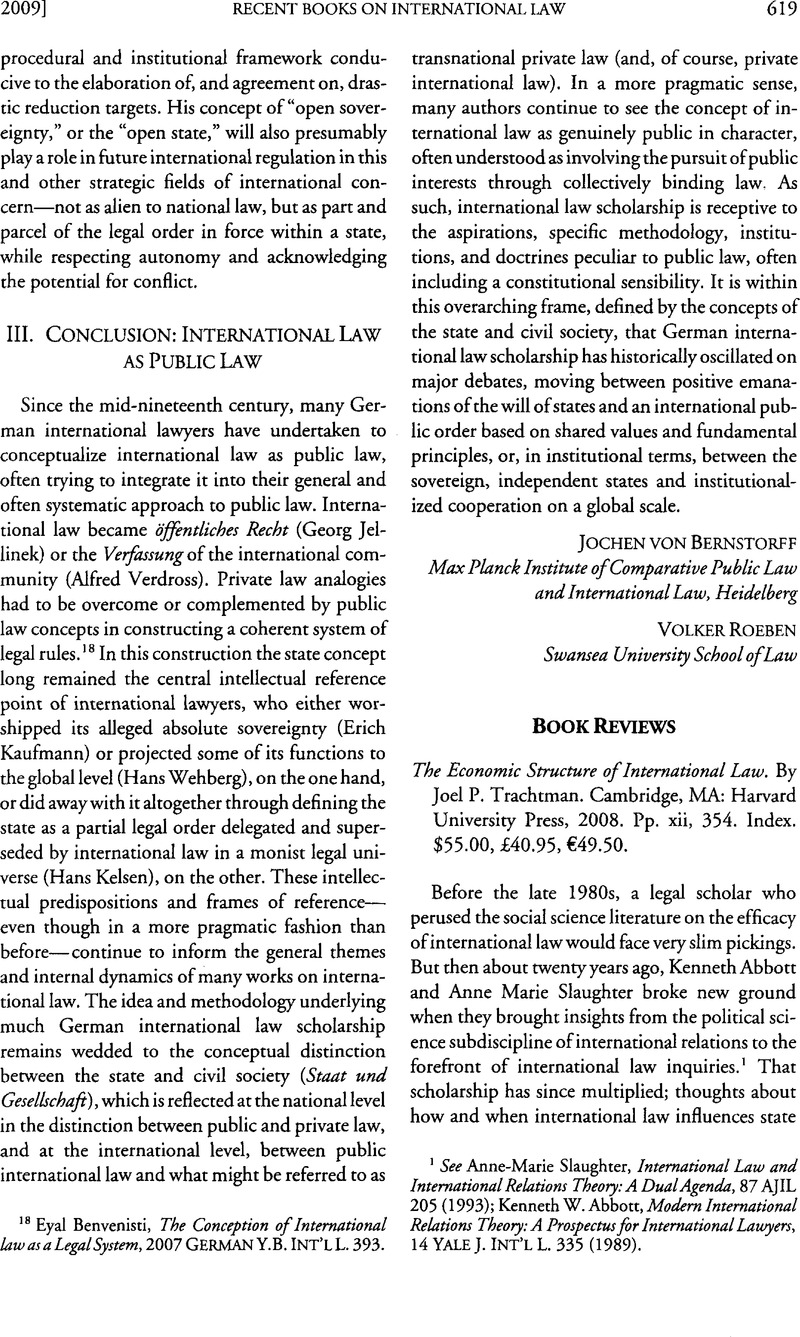No CrossRef data available.
Published online by Cambridge University Press: 27 February 2017

1 See Anne-Marie, Slaughter International Law and International Relations Theory: A Dual Agenda , 87 AJIL 205 (1993)Google Scholar; Kenneth, W. Abbott Modern International Relations Theory: A Prospectus for International Laivyers , 14 Yale J. Int’l L. 335 (1989).Google Scholar
2 Obviously, this list is merely intended to be illustrative. Arguably, other international law scholars such as Tom Ginsburg, Kal Raustiala, Eric Posner, and Jack Goldsmith might fit this description as well, but I would characterize these scholars’ work as more eclectic from an interdisciplinary perspective. In other words, while these scholars routinely invoke Insights from law and economics, they tend to use them in conjunction forged largely in the international relations literature.
3 See, e.g., Jeffrey, L. Dunnoff & Joel, P. Trachtman Economic Analysis of International Law, 24 Yale J. Int’l L. 1 (1999)Google Scholar.
4 See Jack, L. Goldsmith & Eric, A. Posner The Limits of International Law 36–39 (2005).Google Scholar
5 See id. at 36-37.
6 See id. at 87.
7 See Andrew, T. Guzman How International Law Works: A Rational Choice Theory 71–86 (2008)Google Scholar.
8 A growing group crop of scholars in the legal academy, such as Richard Steinberg, Daniel Abebe, and Ami Bradford, are emphasizing such asymmetric power dynamics among states in their scholarship.
9 See Lloyd, Gruber Ruling The World: Power Politics and the Rise of Supranational Institutions (2000).Google Scholar